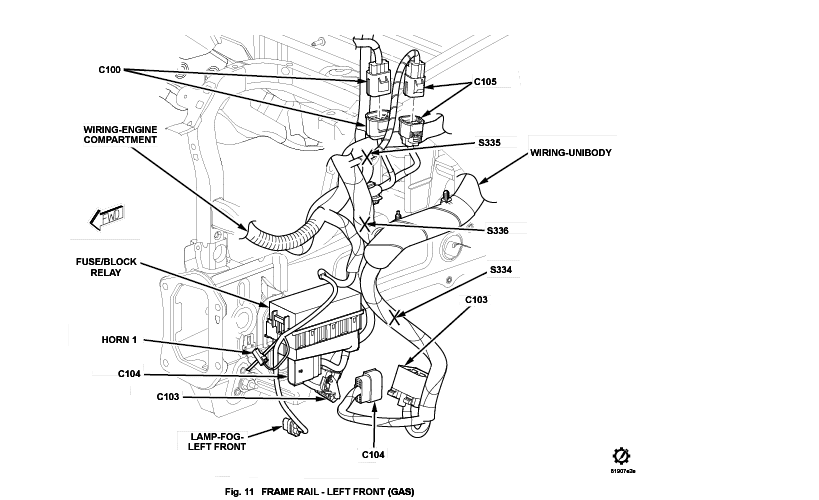
U0125 Lost Communication With Multi-Axis Acceleration Sensor (MAS) Module
Content
U0125 Lost Communication With Multi-Axis Acceleration Sensor (MAS) Module
OBD-II DTC Datasheet
Lost Communication With Multi-Axis Acceleration Sensor (MAS) Module
What does this mean?
This is a generic communication system diagnostic trouble code that applies to most makes and models of vehicles. This code means the Multi-Axis Acceleration Sensor (MAS) module and other control modules on the vehicle are not communicating with each other.
The circuitry most commonly used for communication is known as Controller Area Bus communication, or simply the CAN bus. Without this CAN bus, control modules cannot communicate and your scan tool may not receive information from the vehicle, depending on which circuit is involved.
The MAS module is responsible to inform the other modules on the CAN bus what position the vehicle is in and if it is going in the direction the driver intended. This affects steering system operation, suspension system changes, and most importantly is needed for electronic stability control (ESC). ESC maintains vehicle stability under all driving conditions, no matter if on wet pavement or during aggressive driving.
Troubleshooting steps may vary depending on the manufacturer, the type of communication system, the number of wires, and the colors of the wires in the communication system.
symptoms
Symptoms of a U0125 engine code may include:
- Malfunction Indicator Lamp (MIL) illuminated
- ABS indicator is on
- TRAC indicator is on (depending on the manufacturer)
- ESP / ESC indicator is on (depending on the manufacturer)
reasons
Usually the reason for installing this code is:
- Open power or ground to MAS module (most common)
- Open in CAN + bus circuit
- Open in the CAN bus - electrical circuit
- Short circuit to power in any CAN bus circuit
- Short to ground in any CAN bus circuit
- Rarely - the control module is faulty
Diagnostic and repair procedures
A good starting point is always to check the Technical Service Bulletins (TSB) for your particular vehicle. Your problem may be a known issue with a known manufacturer-released fix and could save you time and money while troubleshooting.
If your scan tool can access fault codes and the only one you retrieve from other modules is the U0125, try to access the MAS module. If you can access codes from the MAS module, then the U0125 code is either intermittent or a memory code. If unable to access codes for the MAS module, then the U0125 code that the other modules are setting is active, and the problem is there now.
The most common failure is a loss of power or ground.
Check all fuses that power up the MAS module on this vehicle. Check all grounds for the MAS module. Locate where the ground attaching points are on the vehicle and make sure that these connections are clean and tight. If you have to, take them off, get a small wire bristle brush and baking soda/water solution and clean each one, both the connector and where it connects.
If any repairs were made, clear the diagnostic trouble codes from memory, and see if the U0125 code returns or if you are able to communicate with the MAS module. If the code does not return or communication is re-established, then the fuses/connections were most likely your problem.
If the code returns, locate the CAN C bus communication connections on your particular vehicle, most importantly the MAS module connector. Disconnect the negative battery cable before unplugging the connector at the LAS control module. Once located, visually inspect the connectors and wiring. Look for scraping, rubbing, bare wires, burn spots or melted plastic. Pull the connectors apart and carefully inspect the terminals (the metal parts) inside the connectors. See if they look burned or have a green tint indicating corrosion. Use electrical contact cleaner and a plastic bristle brush if cleaning of the terminals is needed. Let dry and apply electrical grease where the terminals contact.
Before connecting the connectors back to the MAS module, make these few voltage checks. You will need to have access to a digital volt-ohmmeter (DVOM). Verify that you have power and ground at the MAS module. Gain access to a wiring diagram and determine where the main powers and grounds come into the MAS module. Reconnect the battery before continuing, with the MAS module still disconnected. Connect the red lead of your voltmeter to each B+ (battery voltage) supply coming into the MAS module connector and the black lead of your voltmeter to a good ground (if not sure, battery negative always works). You see a reading of battery voltage. Verify that you have good grounds as well. Hook the red lead of your voltmeter to battery positive (B+) and the black lead to each ground circuit. Once again you should see battery voltage at each connection. If not, repair the power or ground circuit problem.
Then check the two communication circuits. Locate CAN C+ (or HSCAN+) and CAN C- (or HSCAN - circuit). With the black wire of the voltmeter connected to a good ground, connect the red wire to CAN C+. With the key on and engine off, you should see about 2.6 volts with little fluctuation. Then connect the red wire of the voltmeter to the CAN C- circuit. You should see about 2.4 volts with little fluctuation. Other manufacturers show CAN C- at about 5V and an oscillating key with the engine off. Check your manufacturer's specifications.
If all tests have passed and communication is still not possible, or you were unable to clear the U0125 fault code, the only thing left that can be done is to seek assistance from a trained automotive diagnostician, as this would indicate a failed MAS module. Most of these MAS modules must be programmed, or calibrated to the vehicle in order to be installed correctly.
Related DTC discussions
- There are currently no related topics in our forums. Post a new topic on the forum now.
Need more help with code u0125?
If you still need help with DTC U0125, post a question in the comments below this article.
NOTE. This information is provided for informational purposes only. It is not intended to be used as a repair recommendation and we are not responsible for any action you take on any vehicle. All information on this site is protected by copyright.

